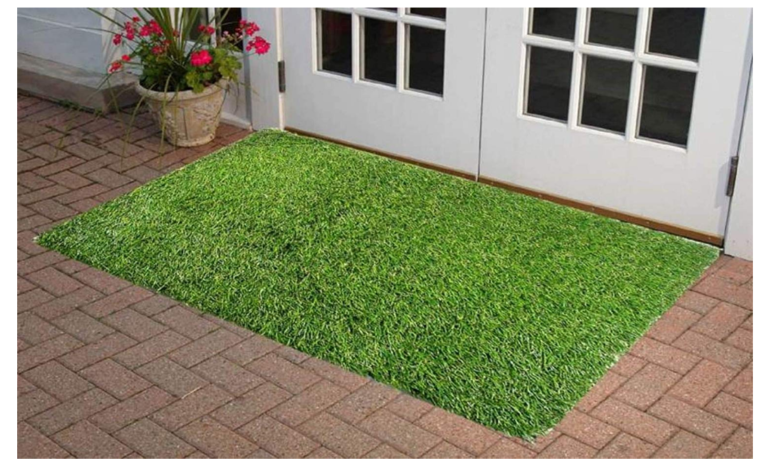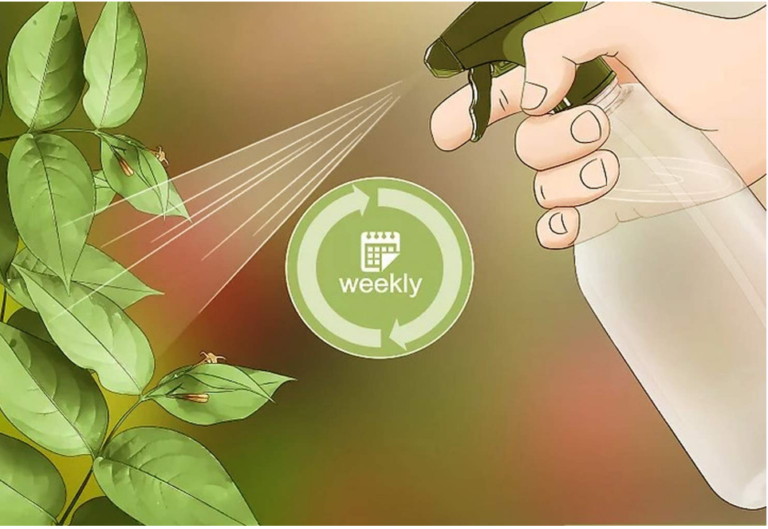How to Add Color and Variety to Your Lawn with Flowers and Plants

Are you tired of looking at a monotonous lawn every time you step outside your house? Adding color and variety to your lawn with flowers and plants is an excellent way to spruce up the look of your home’s exterior. Not only do they add aesthetic appeal, but they also improve air quality, increase biodiversity, and attract beneficial insects.
In this blog post, we’ll give you practical tips on how to add different hues and textures to your yard using various types of flowers and plants in strategic areas. So let’s dive into the world of landscaping and explore the plethora of options available for enhancing your outdoor space!
The Benefits of Adding Color and Variety to Your Lawn with Flowers & Plants
Adding color and variety to your lawn with flowers and plants can have many benefits. It can add beauty and interest to your yard, attract wildlife, and even help improve the health of your lawn.
Flowers and plants can provide a splash of color in otherwise dull or drab yards. They can also add interesting textures and shapes. And, depending on the species you choose, they can attract all sorts of wildlife from butterflies to hummingbirds.
Adding flowers and plants to your lawn can also help improve its health. By adding organic matter to the soil, they help promote drainage and aeration while also helping to reduce compaction.
Assessing Your Climate to Choose the Right Flowers & Plants for Your Lawn

When it comes to adding color and variety to your lawn with flowers and plants, it is important to first assess your climate. This will help you choose the right flowers and plants that will thrive in your specific location.
There are a few things you need to take into consideration when assessing your climate, such as:
- The amount of sunlight your lawn receives each day
- The average temperatures in your area (both highs and lows)
- The amount of rainfall or irrigation you receive each year
Once you have a good understanding of your climate, you can then start choosing the right flowers and plants for your lawn. You may want to consult with a local nursery or gardening center to get started. They will be able to give you some great recommendations based on what grows well in your area.
Preparing Your Lawn for Flower & Plant Installation
When preparing your lawn for flower and plant installation, it’s important to take into account the amount of sunlight exposure and drainage in the area. If the area is too shady, consider adding some fast-growing annuals or using mulch to improve drainage. If the area is too sunny, look for drought-tolerant plants. Once you’ve determined the right location, mark off the planting area with a garden hose or string.
To ensure that your plants have adequate nutrition, loosen the soil in the planting area to a depth of 12 inches using a spade or till. Mix in 2-3 inches of organic compost or manure and use a rake to level the planting area. Be sure to remove any rocks, roots, or other debris that could impede drainage or hurt plant roots.
Water the planting area thoroughly a day before you plan to install your flowers or plants. This will help soften the soil and make it easier to work with. When you’re ready to plant, dig holes that are twice as wide as the root ball of your plant. Gently loosen the roots before placing the plant in the hole and backfilling with soil. Firmly press down on the soil around each plant to remove any air pockets. Water each plant well after planting.
How to Plant, Maintain and Care for Flowers and Plants in Your Lawn

Adding color and variety to your lawn with flowers and plants can increase your curb appeal and make your outdoor space more enjoyable. But before you head to the garden center, it’s important to understand how to plant, maintain and care for these new additions.
Here are a few tips:
When selecting flowers and plants for your lawn, consider the amount of sunlight the area receives. You’ll also want to choose plants that are appropriate for your climate zone.
Prepare the planting area by removing any existing grass or weeds. loosen the soil with a spade or rake so the roots can easily take hold.
Dig a hole that is twice as wide as the root ball and just deep enough so the plant is at the same level it was in its pots. Gently remove the plant from its pot and place it in the hole, backfilling with soil until it is level with the surrounding ground. Firmly press down on the soil to secure the plant in place.
Water deeply immediately after planting. Be sure to keep an eye on newly planted flowers and plants, watering regularly as needed (usually daily for first week or two). Once established, most lawn flowers and plants will need 1-2 inches of water per week.
Apply a layer of mulch around newly planted flowers and plants to help retain moisture in the soil. Mulch also helps prevent weeds from germinating and competing with your new plants for water and nutrients .
Fertilize your flowers and plants regularly (a slow-release fertilizer is best). Be sure to check the directions of the specific fertilizer you purchased for frequency and amount.
Deadhead spent blooms to encourage reblooming and promote more vigorous growth. Prune your lawn flowers and plants as needed, usually once a year. Summer-flowering shrubs, such as hydrangeas, should be pruned in late summer or early fall.
Finally, it’s important to inspect your flowers and plants regularly for pests or disease. If any signs of unsuitable growing conditions crop up, address them quickly to keep your lawn looking its best all season long!
Ideas for Decorating Your Lawn with Colorful Plants and Flowers
If you’re looking to add some color and variety to your lawn, there are plenty of options available to you.
Here are a few ideas to get you started:
1] Incorporate colorful flowering plants into your landscape. There are many varieties of flowers that can add vibrant colors to your yard, including annuals, biennials, and perennials. Consider adding some of these popular choices: roses, tulips, daffodils, lilies, or cosmos.
2] Use landscaping stones or pavers to create colorful paths or borders in your garden. You can find these in a variety of colors, shapes, and sizes at most home improvement stores.
3] Plant a variety of brightly colored annuals in pots or planters around your porch or patio. This is an easy way to add bursts of color without having to do much work. Some popular annuals include impatiens, petunias, marigolds, and zinnias.
4] Add some interest by planting trees or shrubs with colorful leaves or flowers. There are many varieties to choose from that will provide year-round interest in your yard. Some popular choices include Japanese maples, dogwoods, and azaleas.
5] Dress up your fence line with flowering vines like clematis or morning glories. These can add a beautiful pop of color while also providing privacy and security for your property.
Tips for Installing Hanging Plants or Flower Boxes on Balconies or Porches
When adding color and variety to your lawn with flowers and plants, there are a few things to keep in mind when it comes to installing them on your balcony or porch.
Here are some tips:
1] Make sure the area you’re working with is clean and free of debris. This will help ensure that your plants have a good foundation to grow in.
2] Choose the right plants for the location. If you’re putting them in a sunny spot, make sure to pick flowers or plants that can handle direct sunlight.
3] Prepare the soil before planting. This will help your plants get a strong start and also help them stay healthy as they grow.
4] Water regularly and fertilize as needed. This will help your plants stay healthy and vibrant throughout the growing season.
Types of Flowers & Plants You Can Use
There are many different types of flowers and plants that you can use to add color and variety to your lawn.
Some of the most popular flowers and plants include:
Roses – Roses are a classic choice for adding color to your lawn. They come in a wide range of colors, from white to pink to red, and they have a beautiful, classic appearance.
Tulips – Tulips are another popular choice for adding color to your lawn. They come in a wide range of colors, including pink, purple, red, yellow, and white. Tulips are also relatively easy to care for, making them a great option for those who don’t want to spend a lot of time on lawn maintenance.
Daisies – Daisies are a cheerful option for adding color to your lawn. They come in a variety of colors, including white, yellow, pink, and purple. Daisies are also relatively easy to care for and they make a great addition to any garden or lawn.
Lilies – Lilies are a beautiful option for adding color to your lawn or garden. They come in many different colors, including white, pink, orange, yellow, and purple. Lilies require slightly more care than some other flowers and plants but they are definitely worth the effort.
Conclusion
Adding flowers and plants to your lawn can be a great way to add color, variety, and beauty to your outdoor space. With the right planning, you can create a stunning outdoor oasis with colorful blooms that will make neighbors jealous.
Just remember to do some research before buying any plants or flowers, so that you know what types of soil they need and how much sunlight they should get. With these tips in mind, you’ll have a beautiful lawn full of life in no time!

James is a passionate writer and gardener with years of experience in home gardening. He is the author of several articles and blog posts on HomeGardenBlog.com, a platform where he shares his expertise and love for plants and gardening with the world.







